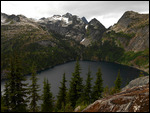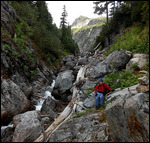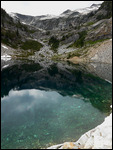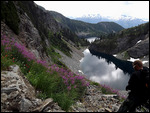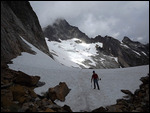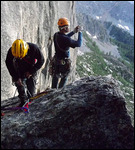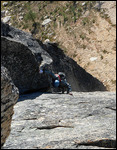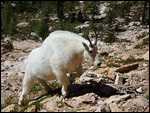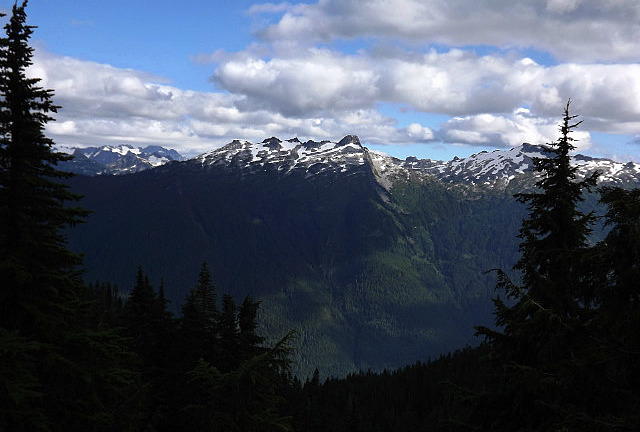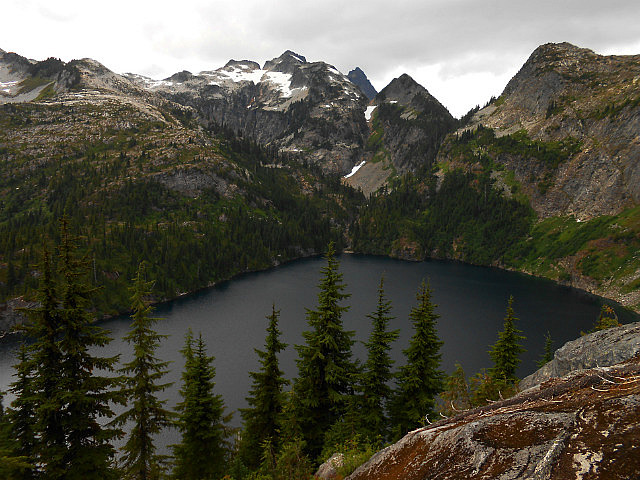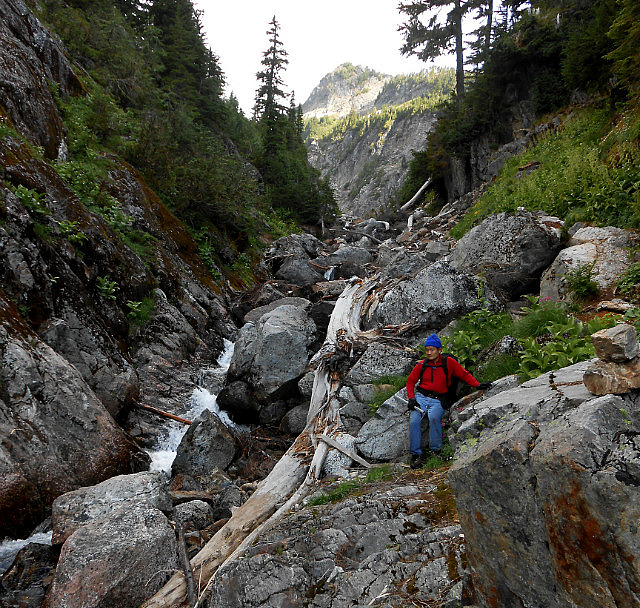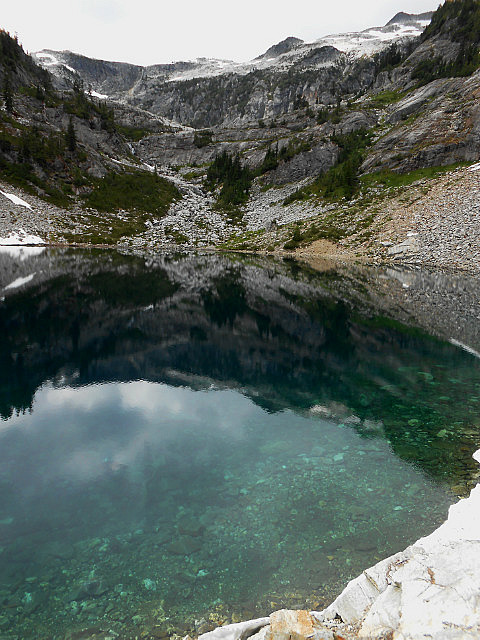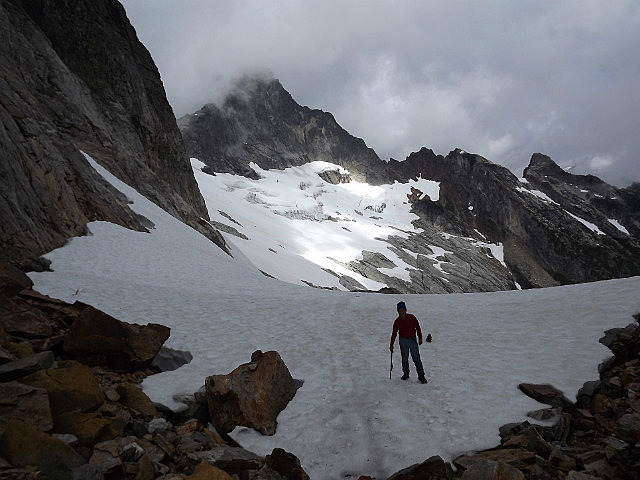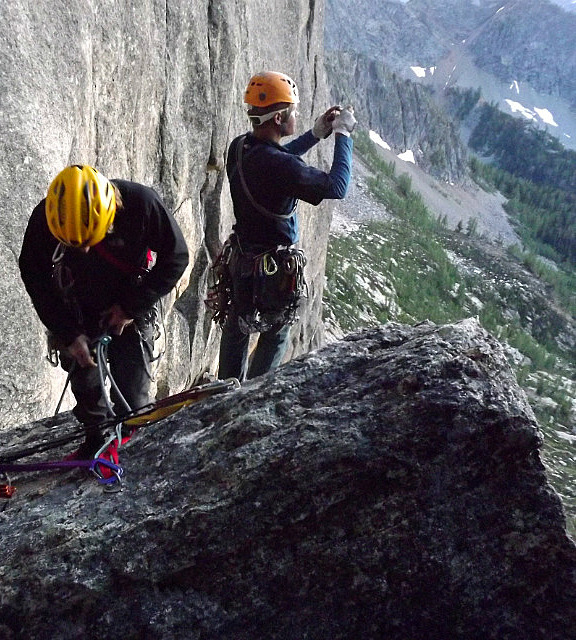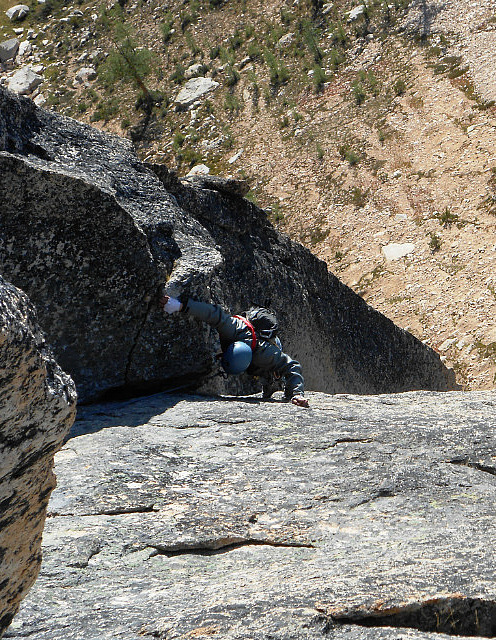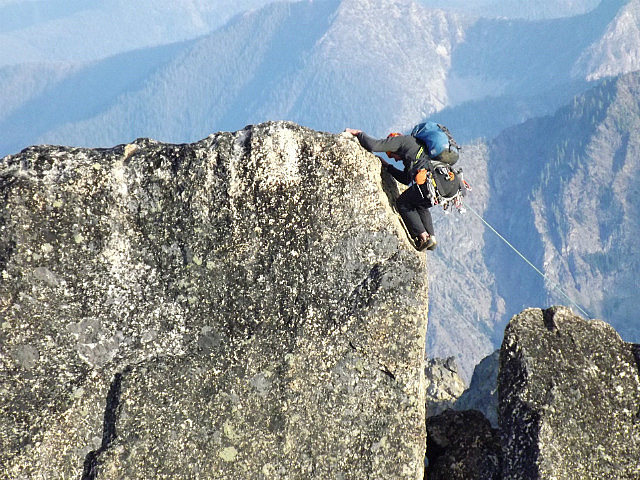North Cascade National Park contains the most Alpine mountains in the lower 48 states. Due to its marine weather patterns and the northern latitude the North Cascades contains the great majority of glaciers in the lower 48. Compared to Sierra Nevada or the Colorado Rockies, where if glaciers exist they're only in the northern and eastern aspects of peaks over 11,000 feet, here glaciers are in all aspects of peaks as low as 7000 feet. These glaciers in the North Cascades pose tremendous obstacles for mountaineers who are not skilled in glacier travel like myself to reach the peaks.
I flew to Seattle to meet with Dirk, then drove to North Cascades National Park. We chose the northeast ridge of Mount Triumph for our peak attempt. Mount Triumph is at 7240 feet elevation, and has a class 5.5 rock climbing route on its northeast ridge. To get to this route we need to hike up the Thornton Lakes drainage, hike cross country to a col, cross the east glacier, then gain the northeast ridge. This turned out a lot more challenging than what I expected. The trail hiking was rough and without any vistas, the cross country hiking was a difficult bushwack and took forever, finally I was spooked by the steepness and the poor run-out of the glacier and decided to turn around. Dirk was very disappointed, since we hauled all the climbing gear, rope, and ice axe/crampons for the glacier.
We decided to use the next day that was budgeted for climbing Mount Triumph to climb the North Early Winter Spire, located in the east of the park where glaciers are less common. This was a good call. We summitted the spire after some pleasurable rock climbing. The views from the top of the spire was fantastic, covering Mount Baker and a slew of jagged North Cascades peaks. Seeing other rock climbers playing acrobat around exposed rock spires was great fun.

